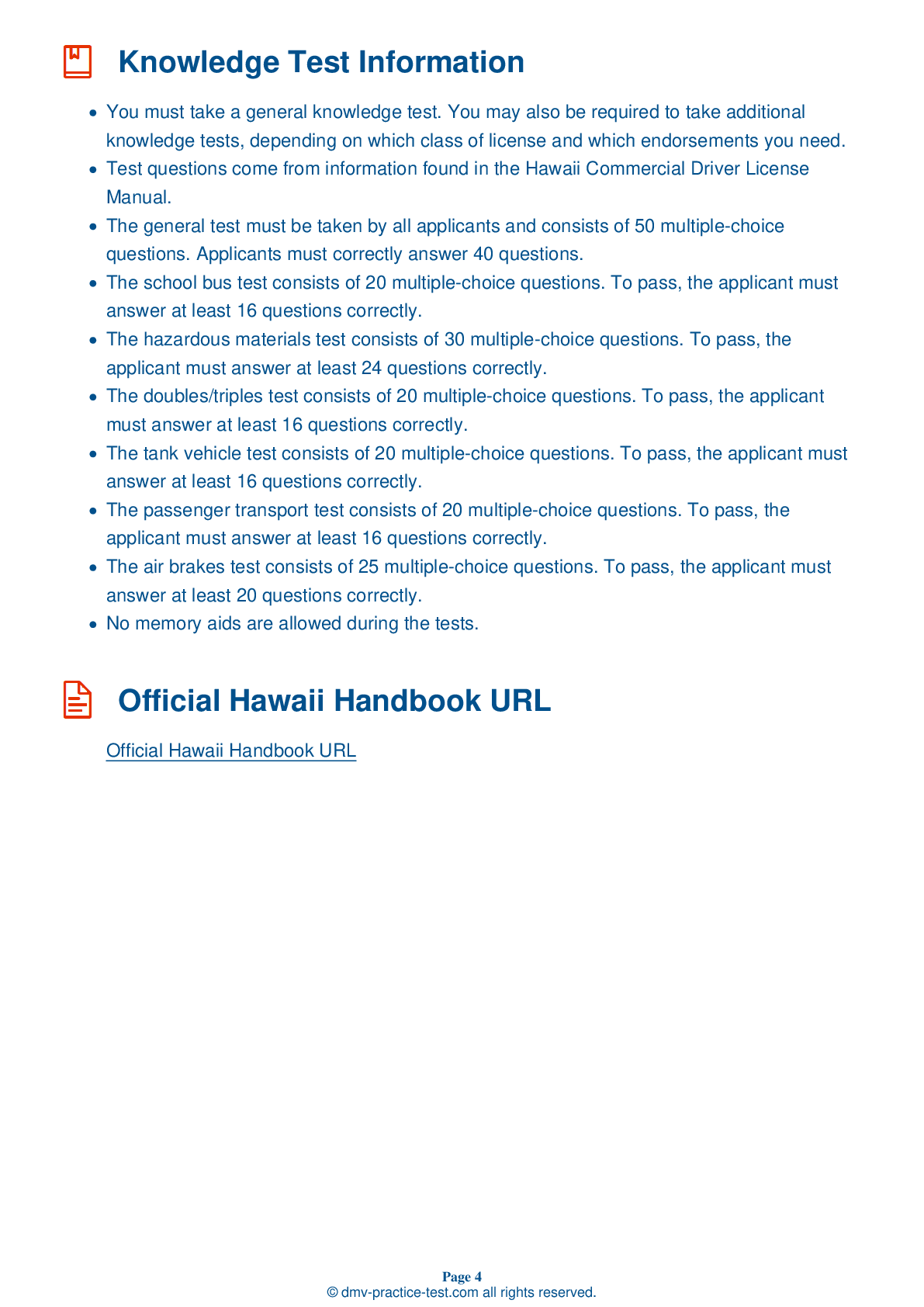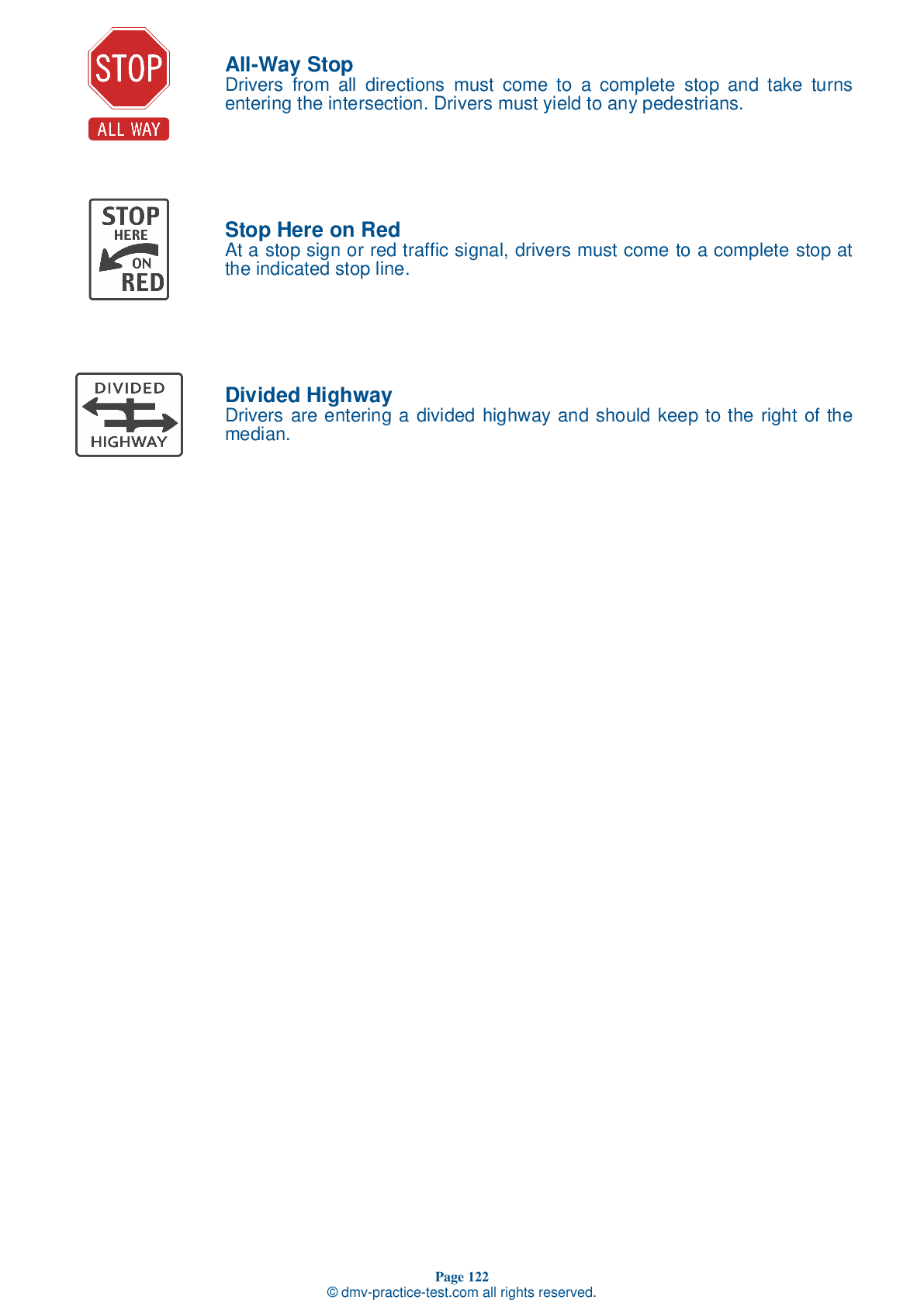Class B Driving Test | Hawaii 2025 #1 Page 4 of 7
Train for FREE online with our Hawaii class B license test. The official exam test consists of several obligatory parts, with all of them checking your knowledge of different blocks of road rules. If you need to obtain a HI CDL class B permit in 2025, practice as much as possible. Free sample tests published on our website will help you check and improve your knowledge and boost your grades. Please bear in mind that CDL class B requirements may vary from state to state.
22 . If you are taking the driving test and the route does not include a railroad crossing, you:
During the on-road driving test, if your route does not include a railroad crossing, the examiner may ask you to explain and demonstrate the necessary procedures at a simulated location.
23 . Before attempting to put out an engine fire:
If you experience an engine fire, you should turn off the engine as soon as safely possible. Avoid opening the vehicle's hood when extinguishing the fire.
24 . Skids caused by over-acceleration can usually be resolved by:
A skid caused by over-acceleration can be resolved simply by removing your foot from the accelerator. Skids of this nature happen most frequently on surfaces covered in snow or ice.
25 . A truck tractor built after March 1, 1997 must be equipped with:
Truck tractors with air brakes built on or after March 1, 1997 are required to be equipped with Anti-Lock Braking Systems (ABS).
26 . Which of the following is not a reason to cover cargo?
You should cover your cargo to protect people from the cargo if it spills, as well as to protect the cargo from the weather.
27 . Rolling backward when beginning to accelerate is dangerous because:
Be sure that you are able to accelerate without first rolling back. Rolling backwards may cause you to collide with a vehicle or other obstacle behind your truck.
28 . When driving in winter, which of the following should receive extra attention in a pre-trip inspection?
When doing a pre-trip inspection during the winter, you should pay extra attention to the coolant level and amount of antifreeze; the defrosting and heating equipment; the wiper blades and windshield washer; the tires and tire chains; the lights and reflectors; the windows and mirrors; the hand holds, steps, and deck plates; the radiator shuttles and winterfront; and exhaust system.
See the exact questions that will be on the 2025 Hawaii DMV exam.
99.2% of people who use the cheat sheet pass the FIRST TIME
Lillian MCcranie explains how our CDL study guide was helpful in passing the exam and recommends it to everyone.
Cameron tells us how he purchased the CDL exam, and found it to be a useful tool which helped him pass the exam and find a job.



